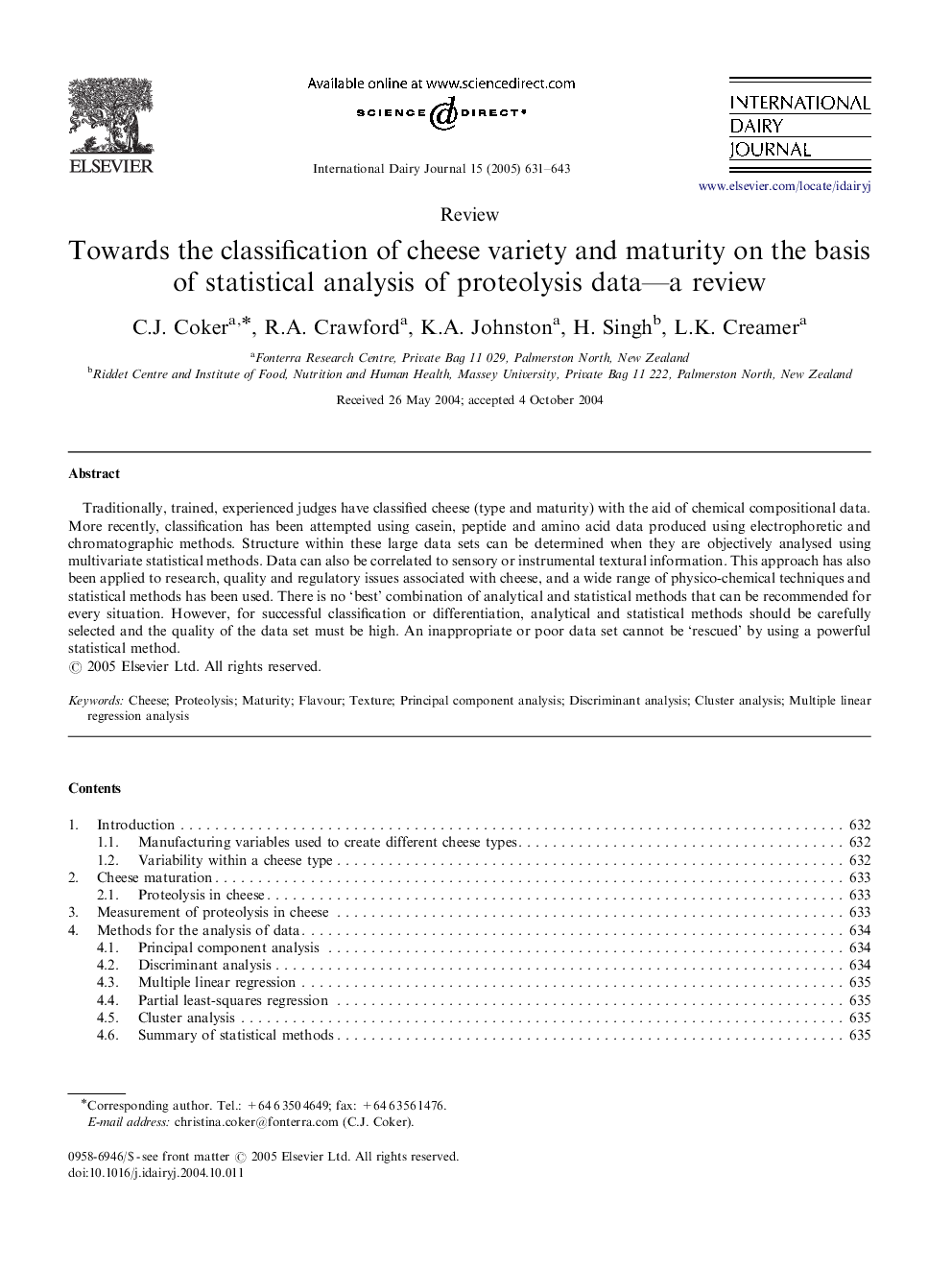| Article ID | Journal | Published Year | Pages | File Type |
|---|---|---|---|---|
| 8979027 | International Dairy Journal | 2005 | 13 Pages |
Abstract
Traditionally, trained, experienced judges have classified cheese (type and maturity) with the aid of chemical compositional data. More recently, classification has been attempted using casein, peptide and amino acid data produced using electrophoretic and chromatographic methods. Structure within these large data sets can be determined when they are objectively analysed using multivariate statistical methods. Data can also be correlated to sensory or instrumental textural information. This approach has also been applied to research, quality and regulatory issues associated with cheese, and a wide range of physico-chemical techniques and statistical methods has been used. There is no 'best' combination of analytical and statistical methods that can be recommended for every situation. However, for successful classification or differentiation, analytical and statistical methods should be carefully selected and the quality of the data set must be high. An inappropriate or poor data set cannot be 'rescued' by using a powerful statistical method.
Keywords
Related Topics
Life Sciences
Agricultural and Biological Sciences
Food Science
Authors
C.J. Coker, R.A. Crawford, K.A. Johnston, H. Singh, L.K. Creamer,
